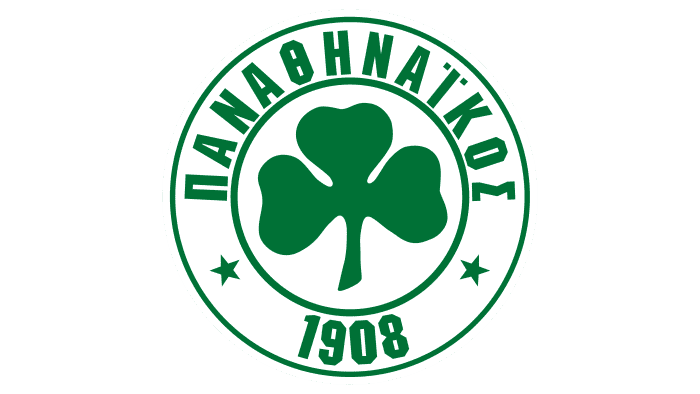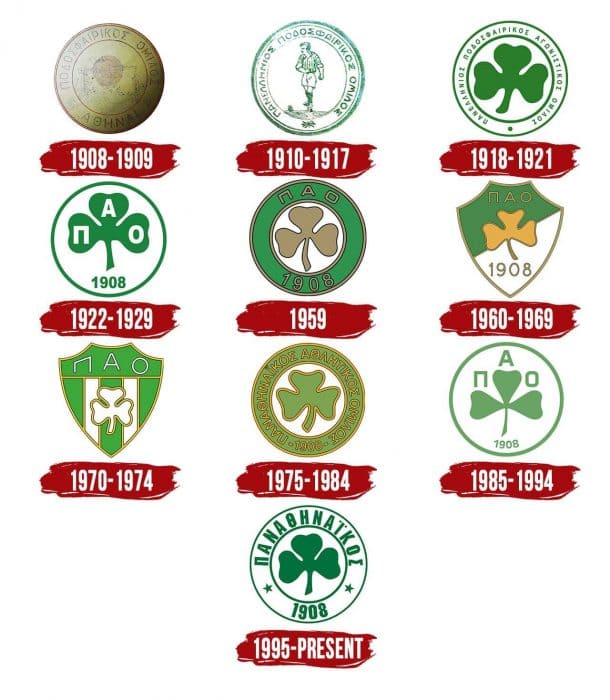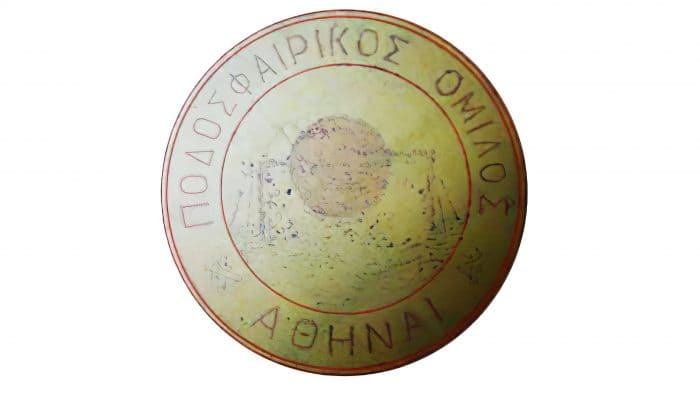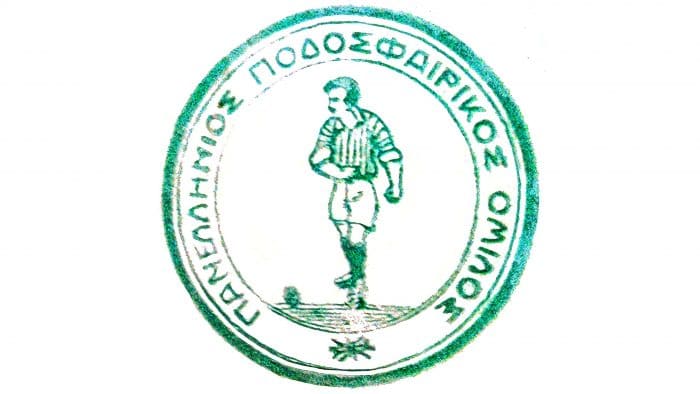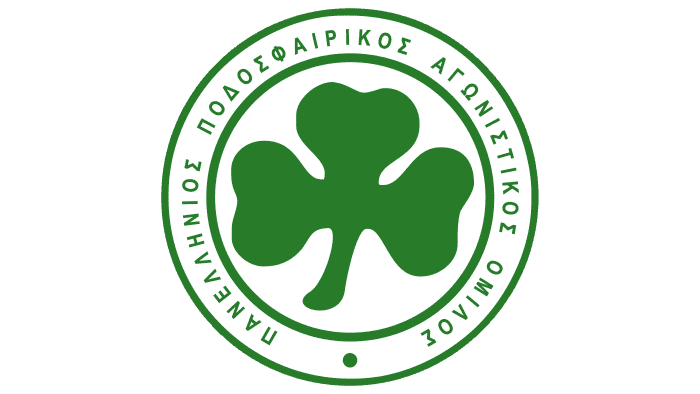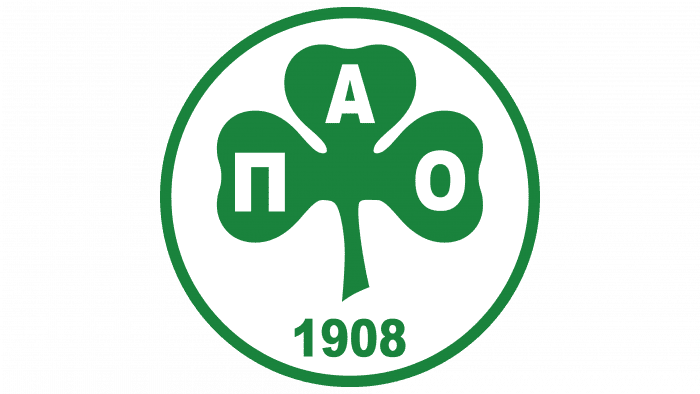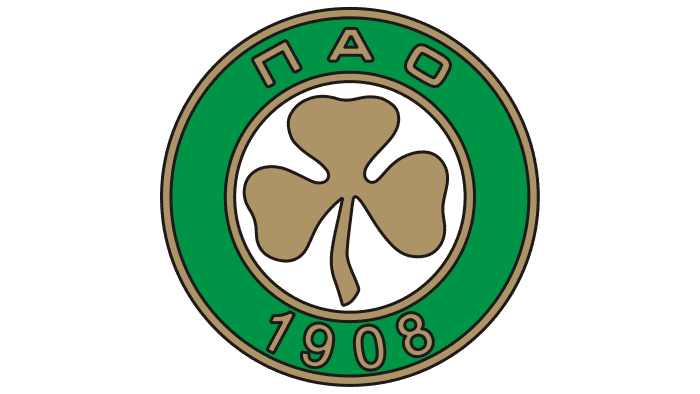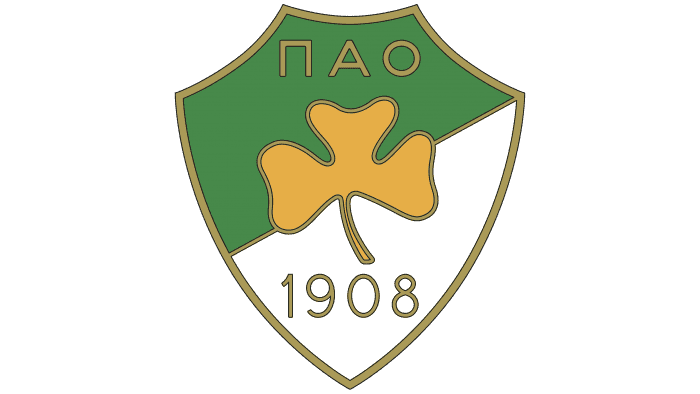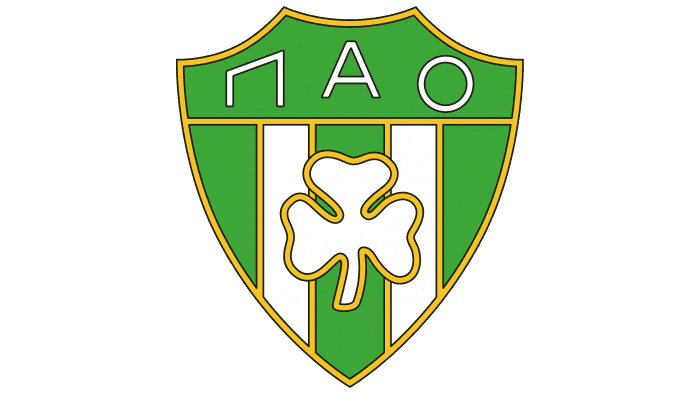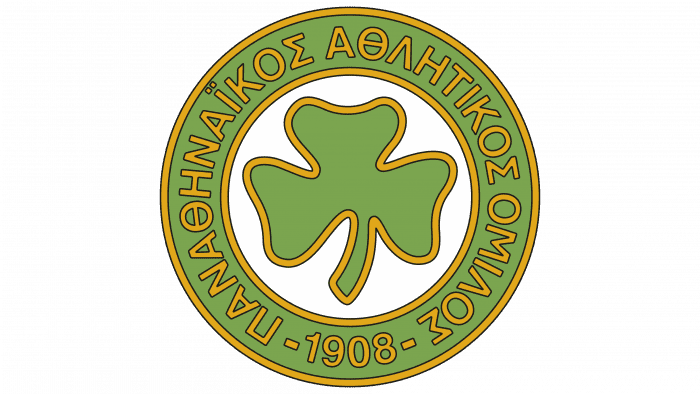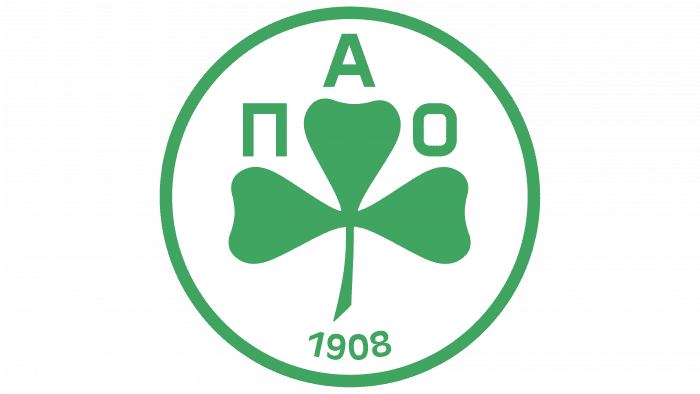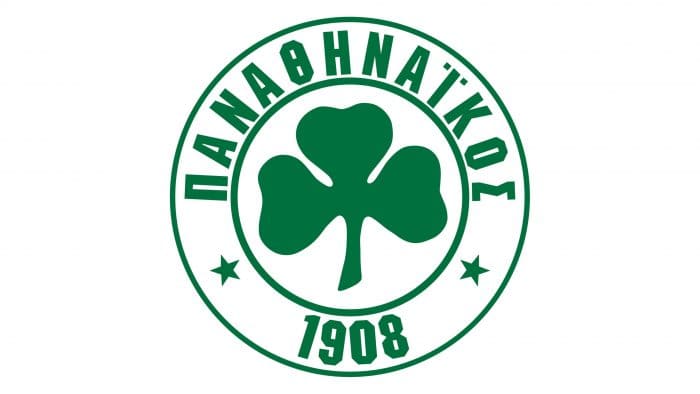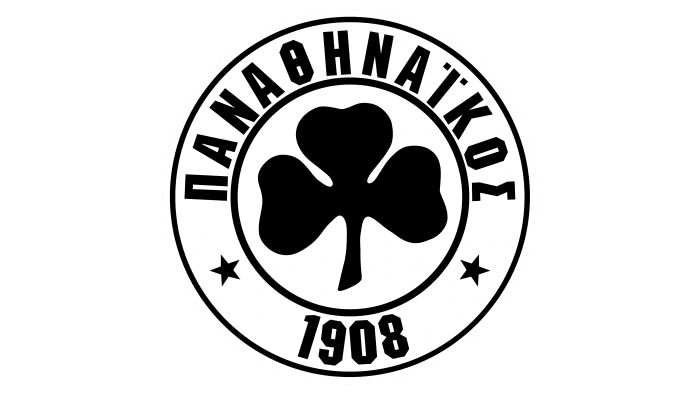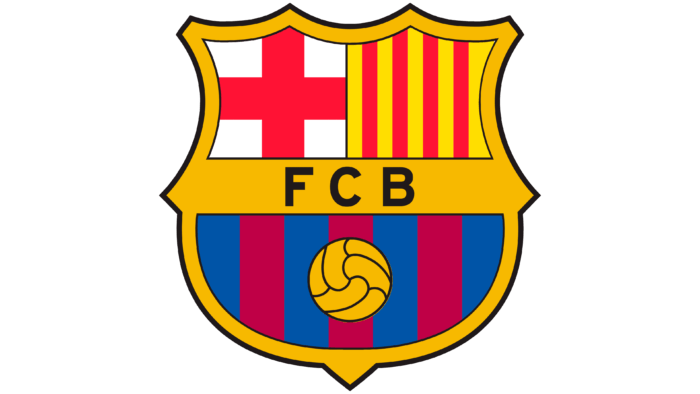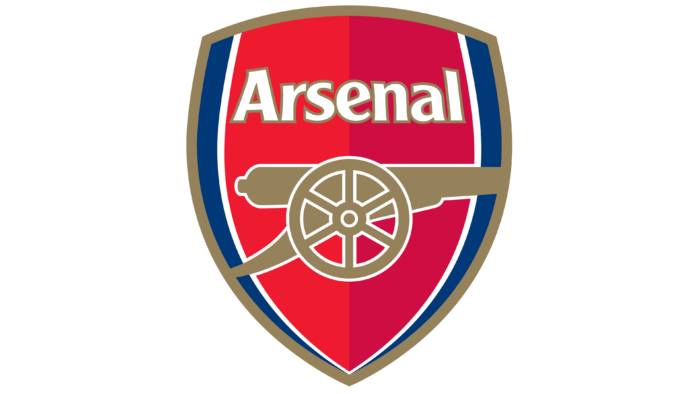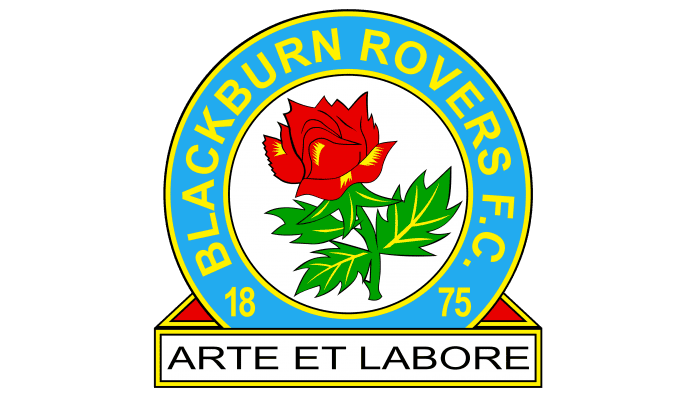The luck and good health of the players are at the heart of the victories that the Panathinaikos logo demonstrates. Athletes play for the soul, and the awards they receive are the result from training and constantly maintained sports tone.
Panathinaikos: Brand overview
| Founded: | 3 February 1908 |
| Founder: | Giannis Alafouzos, Sortivo International LTD, Panathinaikos Athletic Club |
| Headquarters: | Athens, Greece |
| Website: | pao.gr |
Meaning and History
The man who came up with the idea to make the shamrock the team symbol was a football player himself. Michalis Papazoglou joined Panathinaikos in the early 1910s when most players left the club due to a conflict between board members. If not for this event, the PAO might never have had its iconic emblem. Georgios Chatzopoulos, who later became the president of the sports organization, took part in its development.
What is Panathinaikos?
Panathinaikos is a football club from Athens, Greece, participating in the Super League and has never left it. They have achieved significant success, winning 20 Greek Championships, 19 Greek Cups, and 3 Greek Super Cups. The team is among the top 3 sports organizations in the country, showcasing the highest achievements in football.
1908 – 1909
The first Panathinaikos logo featured a soccer ball – it’s then a symbol. He was inside a light circle placed in the center of the ring. The name Podosferikos Omilos Athinon was written around the edges in the Greek alphabet.
1910 – 1917
A new era in the club’s history began in 1910, when the founder, Giorgos Kalafatis, left, along with most of the players. Thanks to this, new players were added to the team, including Michalis Papazoglou, who in the future played a large role in the creation of the iconic identity.
During the same period, green and white were recognized as part of the official palette. As a result, the club has a green and white circle logo depicting a running man in Panathinaikos’s shape and with an inscription in Greek.
1918 – 1921
In 1918, the Greek athlete Michalis Papazoglou proposed to make the trefoil a symbol of the team – a sign of luck, unity, and harmony. Perhaps the footballer got this idea from Billy Sherring: when a marathon runner won one of the 1906 Olympic Games, he had a green shamrock on his chest. On the Panathinaikos emblem, this element was inside a white circle, placed in a ring with the club’s Greek name.
1922 – 1929
In 1922, the sports organization was renamed Panathinaikos Athlitikos Omilos. Immediately after the rebranding, the designers changed the logo. They removed the long lettering and removed the green line separating the circle and the ring. This made it possible to move the trefoil upwards so that there would be space below for the club’s year. The only hint of the name is the letters “Π,” “A,” and “O,” located on top of three leaves.
1930 – 1959
The white circle had a ring again – this time, a dark green one. All the inscriptions were transferred to it: the abbreviation “ΠAO” (above) and the number “1908” (below). The shamrock, letters, numbers, and the outline of the ring turned brown.
1960 – 1969
For the first time, the club changed its tradition by using a shield in a triangle with two cut corners instead of a circle. The elements remained in their places; only the shamrock is now yellow, not brown. The shield is diagonally divided into two halves: a light green top and a white bottom.
1970 – 1974
The year the Panathinaikos was created has been removed. The emblem design has been radically changed: most of the shield is covered with vertical stripes, which are painted in two shades of green.
1975 – 1984
The club returned the round logo with a shamrock in the center. In the green ring frame, there is the inscription “ΠΑΝΑΘΗΝΑΪΚΟΣ ΑΘΛΗΤΙΚΟΣ ΟΜΙΛΟΣ,” supplemented by the year of the team’s foundation.
1985 – 1994
After the redesign, the ring became very narrow, and the full name was reduced to three letters, “AO,” which are now located above the leaves. The number “1908” is written directly under the shamrock leg.
1995 – today
The final version of the Panathinaikos FC logo is as round as the previous ones. It contains a white ring that separates the inscriptions “ΠΑΝΑΘΗΝΑΪΚΟΣ” and “1908” from the graphics. Two small five-pointed stars are depicted between the word and the number. All elements are green.
Panathinaikos: Interesting Facts
Panathinaikos Athletic Club, often just called Panathinaikos or PAO, is a famous sports team in Greece. It’s known for doing well in football and other sports.
- Started in 1908: It didn’t just start with football. Panathinaikos plays many sports like basketball, volleyball, and water polo. It’s all about making Greek sports better in many areas.
- Shamrock Logo: Giorgos Kalafatis, who started the club, chose a shamrock as the logo. It stands for good luck, winning, and everyone being together. Now, lots of people know this symbol.
- Home Stadium: They play at the Apostolos Nikolaidis Stadium in Athens. It’s an old football place with a special feel that fans love.
- Big Game in Europe: The football team was in the European Cup final in 1971. They didn’t win, but it was a huge deal.
- Basketball Wins: The basketball team is super good, winning significantly in Greece and Europe. They’re one of the top teams out there.
- Big Rivalry: They have a big rivalry with Olympiacos, called the “Derby of the Eternal Enemies.” It’s a big deal in Greek sports and isn’t just about football.
- Famous Players: The club has had many famous players and coaches in both football and basketball.
- Colors: The team wears green and white, representing nature, growth, and getting along.
- Training Young Players: They’re good at training young athletes, especially in football and basketball. Many have become successful in Greece and other places.
So, Panathinaikos has a long history of winning and big rivalries. It cares a lot about sports in Greece, and people worldwide love this club.
Font and Colors
The shamrock, proposed by Michalis Papazoglou, turned out to be the very symbol that the team leadership was looking for. They needed something associated with the city of Athens, with Greek culture, and at the same time, that was non-nationalistic and universal. The shamrock is perfect for this role because it means luck, nature, unity, and harmony.
The word “ΠΑΝΑΘΗΝΑΪΚΟΣ” is written in the Greek alphabet. The letters are angular: even “Ο” is not round, but octagonal. The same applies to the numbers that make up the number “1908”. In terms of palette, the Panathinaikos emblem includes the main club colors: white (#ffffff) and green (# 00793f).
Panathinaikos color codes
| Green | Hex color: | #00793f |
|---|---|---|
| RGB: | 0 121 63 | |
| CMYK: | 100 0 48 53 | |
| Pantone: | PMS 340 C |
